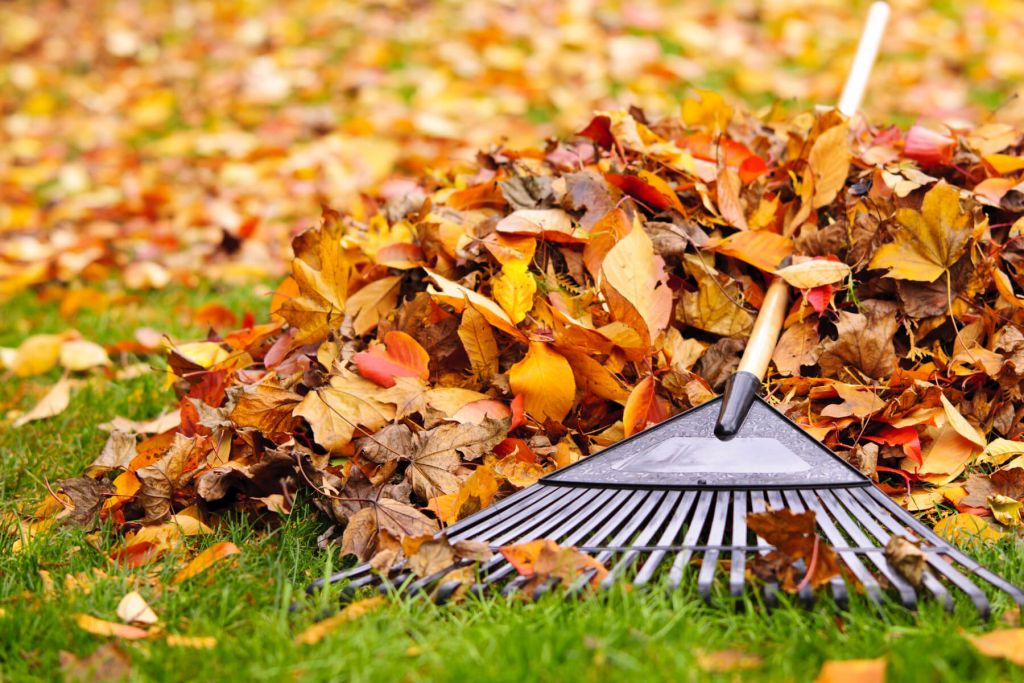Your Garden in October

For many, October is their favourite month when it comes to enjoying the great outdoors - the vibrant colours on the trees, the slight chill in the air...while we might not be able to relax in the sun quite as much (although one could argue we didn’t get much of a chance of that this summer anyway), it’s still a beautiful time to spend outdoors getting creative in the garden.
From those pesky maintenance jobs that need completing before winter, to ways to bring some simple colour to your outside space in anticipation of the bleaker months ahead, here’s some tasks, tricks and even a few treats to keep your garden looking tip-top this October.
Give your lawn an autumn advantage
Much like our skin after a little too much sun exposure during the warmer months, your grass can be left a little parched. In the same way that our skin might need a little TLC in the form of a rich moisturiser, so does the grass. Opt for an autumn lawn feed which is high in the macro-nutrients Phosphorus and Potassium which aid disease resistance and cold hardiness as well as improving drought tolerance. Best applied when the ground is damp, sprinkle all over the lawn to promote continued healthy growth.
To give your lawn a little autumn facelift, mow less often and use a longer blade when you do. Rake often to revive your lawn, and to avoid waterlogging over winter, spike your lawn with a fork all over the surface - anywhere between 8cm- 15cm should suffice.
Your lawn will soon be looking spring-fresh! We can’t recommend using these methods for your skin however, perhaps best to stick to the moisturiser…
Replenish your wood reserves
This time of year can throw us when it comes to the weather. On those warm, sunny days it’s hard to imagine a time when we’ll be huddled inside wearing thick layers again, but then as the first frost arrives, the reality of colder months ahead starts to set in.
If you have a wood-burning stove inside, then now’s the time to think about replenishing those wood reserves, so that you’re not caught short if a cold snap does arrive! Logs and kindling that you’ve been seasoning over the summer should now be ready, providing the wood doesn’t contain more than 20% moisture. You can check by looking at the colour, which should be pale, the weight, which should be much lighter than when the logs were first cut, and the sound - knock two logs together and they should make a clear sound as they touch, rather than a dull thud. If your logs and kindling aren’t quite seasoned, then just ensure they’re still being kept in a protected environment away from the elements, are correctly stacked, and also that the pieces of wood aren’t too big - the larger they are, the longer they’ll take to season. We have seasoned logs and kindling readily available to buy too, so that you can ensure you’ll be cosy when the autumnal air hits!
Pick up your patch
One surefire sign that it’s October, is the sight of pumpkins and squash adorning fields and perhaps even your own garden. While their vibrant colours make for a pretty festive affair, if you want to enjoy the fruits of your labour (and preserve your lawn in the process too), then you’ll want to raise your pumpkins and squash fruits up onto bricks or sleepers to give them the best chance of fully ripening and to keep them dry so they don’t turn your lovely lawn into a squashed stew. Need some inspiration for using other garden fruits? Check out our tips.
Focus on roses
The careful care of roses can feel like a full time job sometimes - it doesn’t matter which month it is, something always needs to be done to keep them happy and healthy. This month the task is to prune your rambling and climbing roses once they’ve finished flowering, and to avoid any damage caused by winds, it’s a good idea to tie in the stems too.
If you have roses that have produced good rosehips, then these can be left to develop - just snip off the dead flowers around them. Planting new roses might not have been high on your adenda, but this can also be done this month, before the winter sets in. Buy as a container-grown plant, and plant the roots directly into the ground. The new plants should establish quickly due to the moist soil, and come spring you’ll have some extra floral treats in your garden, and will probably be thankful that you put in the work now!
Pot prepping
Now’s a great time to think about adding a little colour to your garden over the colder months, in the form of winter pots and baskets. These small additions can make a big difference to your outside space when the weather gets a bit bleaker - you’ll be glad you added some brighter hues for the darker days!
As for what to plant, there are so many options to choose from, so let your creativity run wild. Pansies, cyclamen, heathers, polyanthus, violas and skimmia are all great options for plants that’ll give you plenty to smile about until springtime arrives, or if simple succulents are more your style, houseleeks (sempervivum) are hardy, look beautiful in pots and will add some splashes of colour and greenery to your garden all year round. Plant them and then top-dress with gravel.

